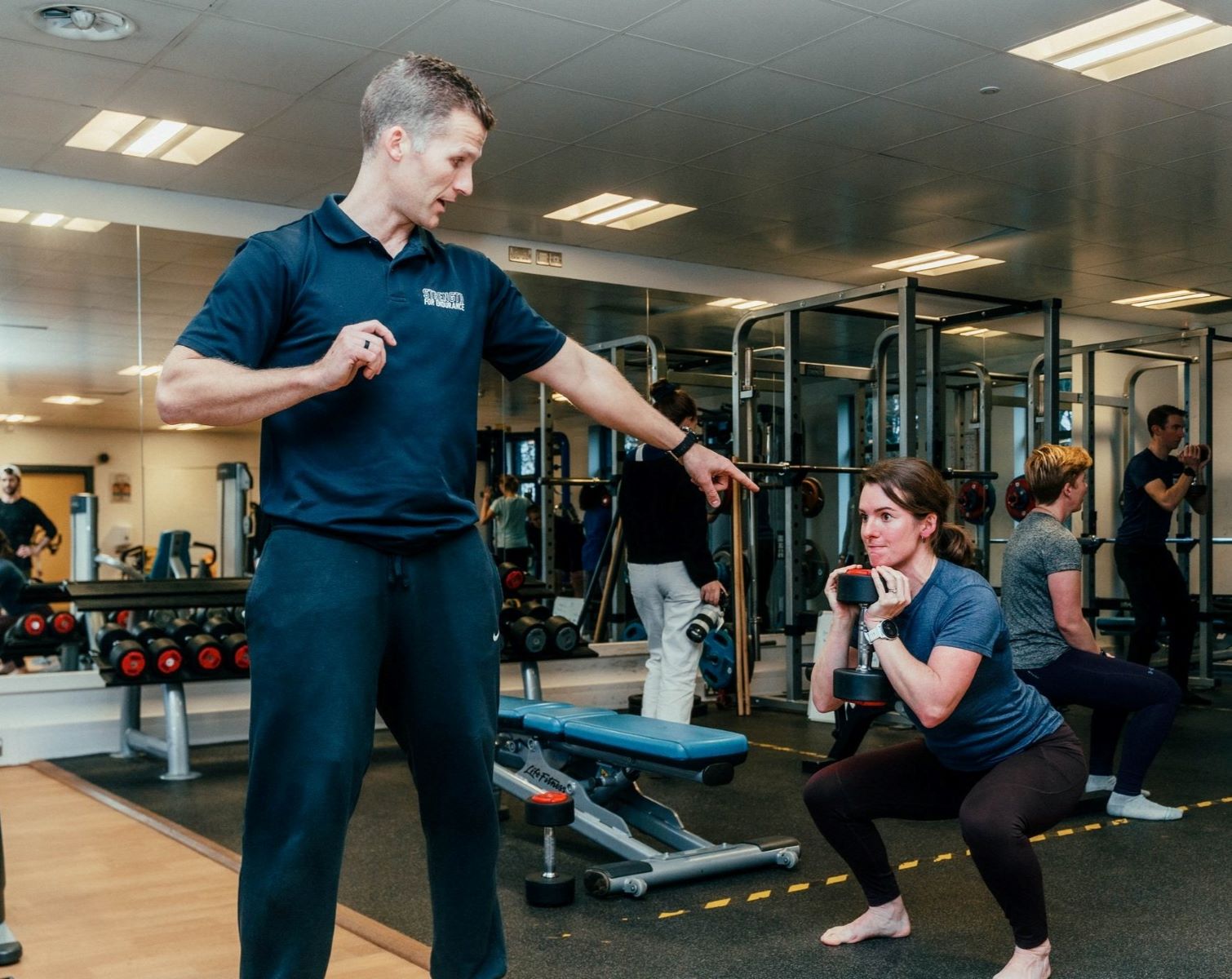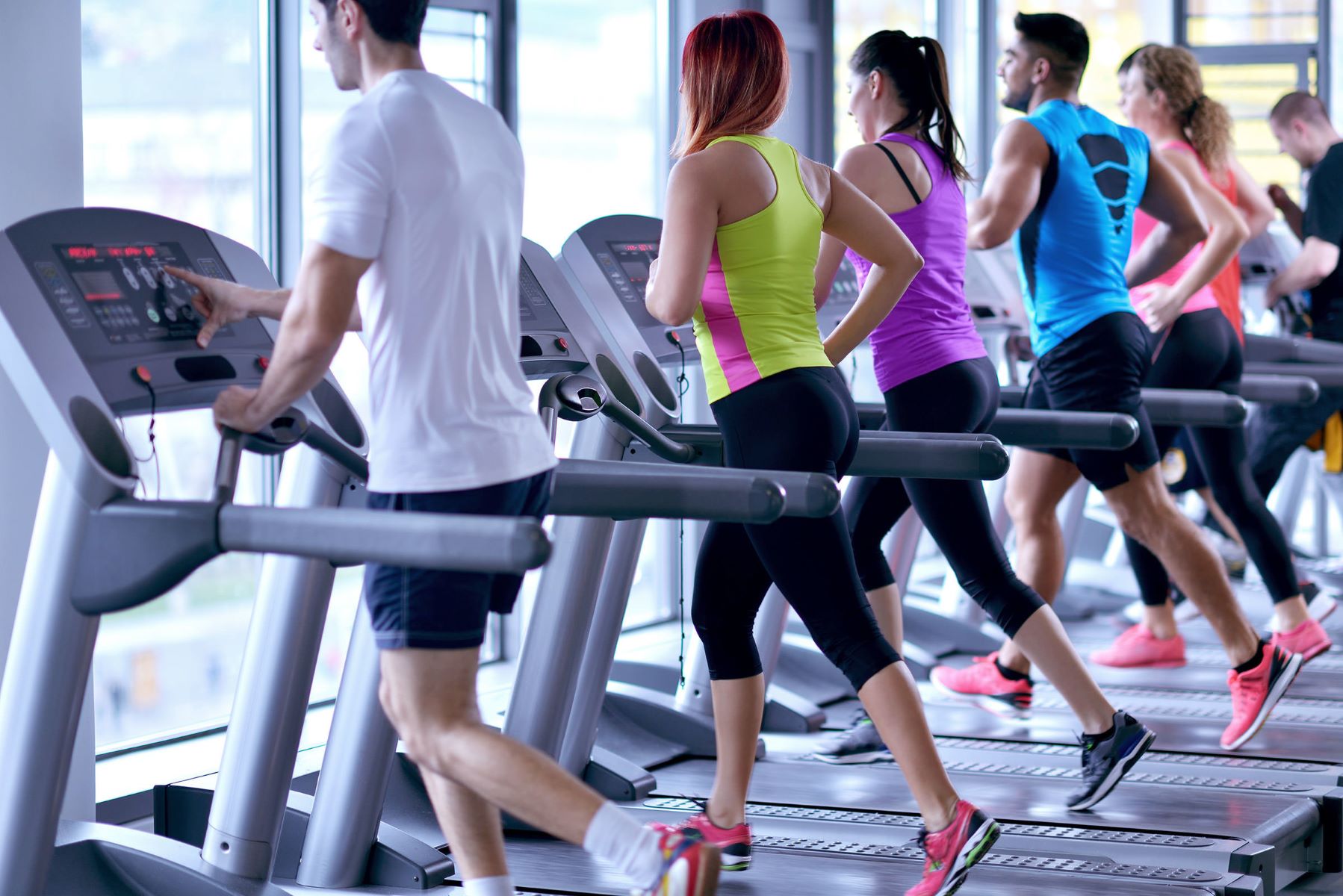Home>Misc>Featured>Which Activity Is The Best Choice For Building Cardiorespiratory Endurance?


Featured
Which Activity Is The Best Choice For Building Cardiorespiratory Endurance?
Modified: January 22, 2024
Discover the featured activity that is the perfect choice for building cardiorespiratory endurance and taking your fitness to the next level.
Introduction
When it comes to improving your cardiovascular fitness, there are several activities that can help you build cardiorespiratory endurance. Engaging in regular exercise not only boosts your overall health but also strengthens your heart and lungs, allowing them to efficiently deliver oxygen to your muscles. This increased endurance can lead to improved stamina, energy, and overall quality of life.
Choosing the right activity for building cardiorespiratory endurance depends on your personal preferences, fitness level, and availability of equipment. In this article, we will explore some of the best choices for building cardiorespiratory endurance and discuss the benefits of each. Whether you enjoy the freedom of outdoor activities or prefer the controlled environment of a gym, there is an option that will suit your needs and help you reach your fitness goals.
It is important to note that before starting any new exercise routine, it is always advisable to consult with a healthcare professional, especially if you have any underlying health conditions.
Jogging
Jogging is a popular and effective activity for building cardiorespiratory endurance. It is a form of aerobic exercise that can be performed both indoors on a treadmill or outdoors in various environments, such as parks or streets.
Jogging works multiple muscle groups in your body, including your leg muscles, core, and even your upper body to some extent. It helps to improve your cardiovascular fitness by increasing your heart rate and lung capacity. Regular jogging can also help to reduce body fat, strengthen your bones, and improve your overall mental well-being.
One of the advantages of jogging is that it is accessible to almost everyone. You don’t need any special equipment or expensive gym memberships to get started. All you need is a pair of comfortable running shoes and a safe place to jog.
For beginners, it is important to start gradually and slowly increase the intensity and duration of your jogging sessions. This will help to minimize the risk of injuries and allow your muscles and joints to adapt to the new activity. Remember to warm up before each session and cool down afterward to prevent muscle stiffness and soreness.
Jogging can be done at your own pace, making it suitable for people of all fitness levels. Whether you prefer a leisurely jog or a faster-paced run, the key is to find a speed that challenges you without pushing you to your limits.
To make your jogging sessions more enjoyable, you can vary your route, listen to music or podcasts, or even jog with a partner or a group. Having a jogging buddy can help to keep you motivated and accountable.
Incorporating intervals of higher intensity, such as sprinting or jogging uphill, can add an extra challenge to your workouts and enhance your cardiorespiratory endurance gains. These bursts of higher intensity can be alternated with periods of slower jogging or walking to allow for recovery.
Cycling
Cycling is another excellent choice for building cardiorespiratory endurance. It is a low-impact activity that provides a great cardiovascular workout while being gentle on the joints.
Whether you prefer cycling outdoors on a road bike or indoors on a stationary bike, this activity can offer numerous benefits. Cycling primarily targets the muscles in your lower body, including your quadriceps, hamstrings, and glutes. It also engages your core muscles for stability and balance.
When cycling, your heart rate increases, promoting better cardiovascular health and endurance. Regular cycling can help lower your blood pressure, improve lung function, and reduce the risk of heart disease. It is also an effective way to burn calories and manage your weight.
The versatility of cycling allows you to choose the intensity and duration of your workouts. You can push yourself to take on challenging uphill routes or opt for a more moderate pace depending on your fitness level and goals.
One of the advantages of cycling is its accessibility. You can cycle outdoors in various terrains, explore new routes, and enjoy the beauty of nature. Additionally, indoor cycling on a stationary bike provides a convenient option for those who prefer to exercise in the comfort of their homes or at the gym.
To maximize the benefits of cycling, it is important to maintain proper form and technique. Ensure that your bike is properly adjusted to fit your body measurements, including seat height and handlebar positioning. This will help prevent discomfort and reduce the risk of injuries.
Cycling can be made more challenging and enjoyable by incorporating interval training. This involves alternating between high-intensity sprints and lower-intensity recovery periods. These bursts of intense effort increase your heart rate and push your body to adapt and improve its cardiorespiratory fitness.
Remember to wear appropriate safety gear, such as a helmet and reflective clothing, when cycling outdoors. This will help ensure your safety and make you more visible to drivers and other road users.
Swimming
Swimming is a highly effective activity for building cardiorespiratory endurance while being gentle on your joints. It is a whole-body workout that engages multiple muscle groups, providing a great cardiovascular challenge.
Swimming works your upper body, lower body, and core muscles simultaneously. The resistance provided by the water helps to strengthen and tone your muscles while improving your cardiovascular fitness.
One of the unique benefits of swimming is that it is a low-impact activity. This makes it an excellent choice for individuals with joint issues, as the water supports your body weight, reducing stress on your joints while still providing an intense workout.
Swimming is also suitable for people of all fitness levels. Whether you are a beginner or an experienced swimmer, you can adjust the intensity of your workout by choosing different strokes, increasing your speed, or incorporating interval training.
In addition to building cardiorespiratory endurance, swimming offers other benefits as well. It helps improve lung capacity, enhance flexibility, and increase overall muscle strength. Regular swimming can also contribute to weight loss and stress reduction.
Another advantage of swimming is that it keeps you cool while you exercise, making it ideal for those who prefer to avoid the heat or sweat associated with other activities. Swimming in a pool or open water also provides a refreshing and enjoyable experience, creating a pleasant environment for your workouts.
If you are new to swimming, it is beneficial to take lessons or seek guidance from a qualified instructor. Learning proper swimming techniques and breathing patterns will not only improve your efficiency in the water but also enhance your safety.
When swimming, you can vary your workouts by trying different strokes, such as freestyle, backstroke, breaststroke, or butterfly. Incorporating interval training, where you swim at a higher intensity for a set distance or time, followed by a period of rest or slower swimming, can further challenge your cardiovascular system.
Remember to warm up and cool down properly before and after swimming to prevent muscle strains and optimize your performance. Additionally, always swim in a safe and supervised environment, and be mindful of your swimming abilities and limitations.
High-Intensity Interval Training (HIIT)
High-Intensity Interval Training (HIIT) is a popular exercise method that combines short bursts of intense exercise with periods of rest or lower-intensity activity. It is a highly effective way to build cardiorespiratory endurance and improve overall fitness in a short amount of time.
HIIT workouts typically involve performing exercises at a high intensity for a specific period, followed by a brief recovery period. This cycle is repeated several times, creating an intense and challenging workout.
The key benefit of HIIT is its ability to maximize your cardiovascular fitness by pushing your heart rate to higher levels and challenging your muscles to adapt. This type of training stimulates your body to become more efficient at utilizing oxygen and enhances your ability to sustain high-intensity exercise.
HIIT workouts are highly adaptable and can be tailored to suit your fitness level and preferences. You can incorporate a variety of exercises, such as sprinting, jumping jacks, burpees, or kettlebell swings into your HIIT routine. The duration and intensity of each exercise interval can be modified to suit your needs.
One of the advantages of HIIT is its time efficiency. HIIT workouts are typically shorter in duration compared to traditional steady-state cardio exercises. This makes it a great option for busy individuals who want to maximize their workout benefits in a limited amount of time.
In addition to improving cardiorespiratory endurance, HIIT also offers other benefits such as increased calorie burn, improved metabolism, and enhanced fat loss. Due to the intense nature of HIIT, it can have a greater impact on EPOC (Excess Post-Exercise Oxygen Consumption), causing your body to burn calories and fat even after your workout.
It is important to note that HIIT is a challenging form of exercise and may not be suitable for everyone, especially those with certain health conditions. If you are new to HIIT or have any concerns, it is advisable to consult with a qualified fitness professional before starting a HIIT program.
Remember to warm up before each HIIT session and cool down afterward to prevent injuries and allow for proper recovery. It is also essential to listen to your body and modify exercises as needed to maintain proper form and avoid overexertion.
Whether you choose to follow a structured HIIT workout or create your own, incorporating this type of training into your fitness routine can significantly improve your cardiorespiratory endurance and help you achieve your fitness goals.
Jumping Rope
Jumping rope is a simple yet highly effective activity for building cardiorespiratory endurance. It is a cost-effective exercise that requires minimal equipment but delivers maximum benefits.
Jumping rope engages multiple muscle groups, including your legs, core, and arms. It elevates your heart rate quickly, making it an excellent cardiovascular workout that improves endurance and stamina.
One of the key advantages of jumping rope is its versatility. You can adjust the intensity of your workouts by varying your speed, incorporating different jump variations, and adding intervals of higher intensity.
Jumping rope can be adapted to suit different fitness levels. Beginners can start with basic jump rope techniques and gradually progress to more advanced skills as they build strength and coordination.
In addition to building cardiorespiratory endurance, jumping rope offers other benefits. It improves agility, coordination, and balance. Regular jumping rope can also help burn calories, aid weight loss, and improve bone density.
When jumping rope, it is important to choose the right length of rope for your height and ensure proper form. Hold the handles with a comfortable grip, keep your elbows close to your body, and maintain a relaxed but engaged posture.
Start with a warm-up to prepare your muscles and joints for the exercise. Begin with a slow pace and gradually increase your speed as you feel more comfortable and confident. Take breaks as needed to rest and avoid overexertion.
For a more challenging workout, you can incorporate intervals of higher intensity. This can involve jumping faster, increasing the height of your jumps, or performing more complex jump rope movements.
Jumping rope can be done virtually anywhere, making it a convenient option for those who prefer to exercise at home or when traveling. It is a portable exercise that can be easily integrated into your fitness routine.
As with any exercise, it is important to listen to your body and start at a level that is suitable for your fitness level. If you have any underlying health conditions or concerns, it is recommended to consult with a healthcare professional before incorporating jumping rope into your routine.
Jumping rope is not only an effective way to improve cardiorespiratory endurance but also a fun and challenging activity that can bring out your inner child. So grab a jump rope and start skipping your way to better fitness!
Rowing
Rowing is a fantastic activity for building cardiorespiratory endurance while providing a full-body workout. It is a low-impact exercise that engages muscles in your arms, back, legs, and core, making it a highly effective cardiovascular exercise.
Rowing works by simulating the action of rowing a boat, either on a rowing machine (also known as an ergometer) or on actual water. This activity requires coordination and engages both your upper and lower body in a rhythmic, smooth motion.
One of the major advantages of rowing is its ability to provide a challenging cardio workout while being gentle on the joints. The fluidity of the rowing motion combined with the resistance from the water or resistance settings on a rowing machine allows you to increase the intensity as your fitness level improves.
Rowing is not only great for improving cardiovascular fitness but also for building muscle strength and endurance. It targets major muscle groups such as the quadriceps, hamstrings, glutes, back, and arms. This simultaneous engagement of multiple muscle groups helps to improve overall strength and promotes a leaner physique.
Additionally, rowing has a low risk of injury compared to other high-impact exercises. The seated position and smooth motion of rowing create minimal stress on the joints, making it an excellent option for individuals with joint issues or those recovering from injuries.
Rowing can be a team sport with competitive racing or a solitary activity, depending on your preference. It offers both indoor and outdoor options, allowing you to choose the environment that suits you best.
When rowing on a machine, it is important to maintain correct form to maximize the benefits and minimize the risk of injury. Keep your back straight, engage your core muscles, and push through your legs while pulling the handle towards your chest. As with any exercise, start at a comfortable pace and gradually increase the intensity and duration of your workouts.
Rowing intervals or varying the resistance settings on the machine can help make your workouts more challenging and improve your cardiorespiratory fitness. You can also incorporate rowing workouts into your regular cardio routine or use it as a cross-training activity to complement other forms of exercise.
Before starting a rowing program, it is recommended to consult with a fitness professional or coach to ensure you are using proper technique and utilizing the rowing machine correctly. They can also provide guidance on establishing a suitable training plan that aligns with your fitness goals.
Regardless of your fitness level or experience, rowing is an effective and enjoyable way to build cardiorespiratory endurance, improve overall fitness, and reap the benefits of a full-body workout.
Conclusion
Improving cardiorespiratory endurance is crucial for overall health and fitness. Engaging in activities that elevate your heart rate and challenge your cardiovascular system can help strengthen your heart and lungs, increase oxygen delivery to your muscles, and improve your stamina and endurance levels.
In this article, we explored some of the best choices for building cardiorespiratory endurance. Jogging is a highly accessible activity that can be done anywhere, while cycling offers a low-impact option that can be enjoyed both indoors and outdoors. Swimming provides a full-body workout with minimal joint stress, and high-intensity interval training (HIIT) offers a time-efficient way to boost your fitness levels. Jumping rope is a portable and versatile exercise that can be tailored to varying fitness levels, and rowing is a full-body workout that engages multiple muscle groups while being gentle on the joints.
When choosing an activity to build cardiorespiratory endurance, it is important to consider your preferences, fitness level, and availability of equipment. Starting slowly and gradually increasing the intensity and duration of your workouts can help prevent injuries and allow your body to adapt to the new exercise.
Remember, no single activity is best for everyone. The key is to find an activity that you enjoy and can sustain in the long run. Consistency is key when it comes to improving cardiorespiratory endurance. Incorporating a variety of activities into your routine can help prevent boredom and keep you motivated.
As with any exercise program, it is essential to listen to your body, take rest days when needed, and seek professional guidance if you have any underlying health conditions. Regular exercise, coupled with a balanced diet and adequate rest, will contribute to overall cardiovascular health and fitness.
So, lace up your running shoes, hop on your bike, swim a few laps, challenge yourself with HIIT, jump rope, or row your way to improved cardiorespiratory endurance. Take the first step towards a healthier and fitter lifestyle today!









